A company has a medical application that generates a large number of media files. The file count is well over one billion and is stored on a Dell EMC Isilon 8-node NL410 cluster. Currently, each node is connected to the network using two 10GbE connections. The Linux-based application does not require high bandwidth; however, it is latency sensitive. Additionally, the Linux hosts are connected to the cluster over NFSv3. The application generates approximately 10,000 files every 10 minutes.
For the past four years, the cluster has been growing at a rate of one additional node per year. The company is running out of free ports on their redundant network switches. They want to know what can be done to ensure continuous availability. They do not want to invest in upgrading the network infrastructure. In addition, the company needs to reduce the number of consumed interface ports on the switches.
Which recommendation should be provided?
Case Study 4
A company is experiencing a noticeable decrease in performance when accessing data on their Dell EMC Isilon cluster. The cluster hosts Microsoft Windows home directories and general purpose file shares. In addition, a file pool policy moves data that has not been modified in six months to an achieve tier. The administrator wants your assistance in understanding the reason for the slow data access. The number of users accessing the cluster has not changed.
The administrator has shared the following baseline metrics. The outputs were captured from a performance- acceptable time frame.
Trace route shows:
-3 hops between clients and the cluster
-Average latency is 3 ms
Iperf shows:
-940 Mb/s average bandwidth
-005 ms average jitter
Netstat on the local network shows:
-05% average re-transmission rate
Hostcache list:
-20 ms average roundtrip time across all clients
The administrator shows the following traceroute output:
Based on the output, what information should be provided the administrator?
SPECIAL INSTRUCTIONS
The remaining Part1 questions are associated with four case studies that describe various environments or settings. Each case study appears on its own display screen. Questions for each case study will appear on separate display screens.
When displaying a question, you can easily review the related case study by clicking on the “Review Case Study” icon shown below:

Case Study 5 – Refer to the Exhibit.
Backing up data from a Dell EMC Isilon cluster exceeds the company’s backup window. Because the company has a large amount of data with a continuous high growth rate, they want to change their backup strategy. The Gen 6 Isilon cluster consists of 24 nodes. Their current backup strategy is an NDMP three-way backup performing weekly full backups to tape and incremental backups each night. The strategy uses Dell EMC NetWorker. The DMA uses Include paths to specify what data to backup. All data on the cluster must remain accessible.
The company’s IT team is now looking for a new data protection strategy. The company wants to:
The IT Team indicates that their currently backup hardware will be used in any solution. Which solution meets their requirements?
Case Study 1
A company has several independent business units that operate globally. The company has consolidated its IT infrastructure services and operations. Common infrastructural services which include IPAM, DNS, NTP, DHCP, and SMTP have been consolidated. The company has complimented its infrastructure development by investing in Dell EMC Isilon clusters to host its user’s home and group directories and for compliance archival purposes required by individual business units.
The IT operations are located in India and the United States with its primary data center facilities co-located between New York and Texas. The company has a total of 60 AD forests:
Users of different AD domains use different FQDN to access their corresponding file services. Additionally, the company does not plan to consolidate the AD domains and each domain uses a different IP subnet. The users of the domains with no trust relationships have a compliance archival requirement. The company wants to all data to be replicated between New York and Texas.
What is the minimum number of replication policies that are required to facilitate granular failover and failback capabilities for each AD domain?
A Dell EMC Isilon administrator wants to know which workloads benefit from using L3 Cache. Which type of workloads will address the administrator’s inquiry?
The :”nfs2” file system has been experiencing delays that have been impacting the entire Dell EMC Isilon cluster. Neither Snapshots nor SyncIQ is configured for these directories. Use the “Launch Simulator” button to verify the SSD strategy. Note: It is necessary to ‘close’ (x) the simulator window to answer the question.
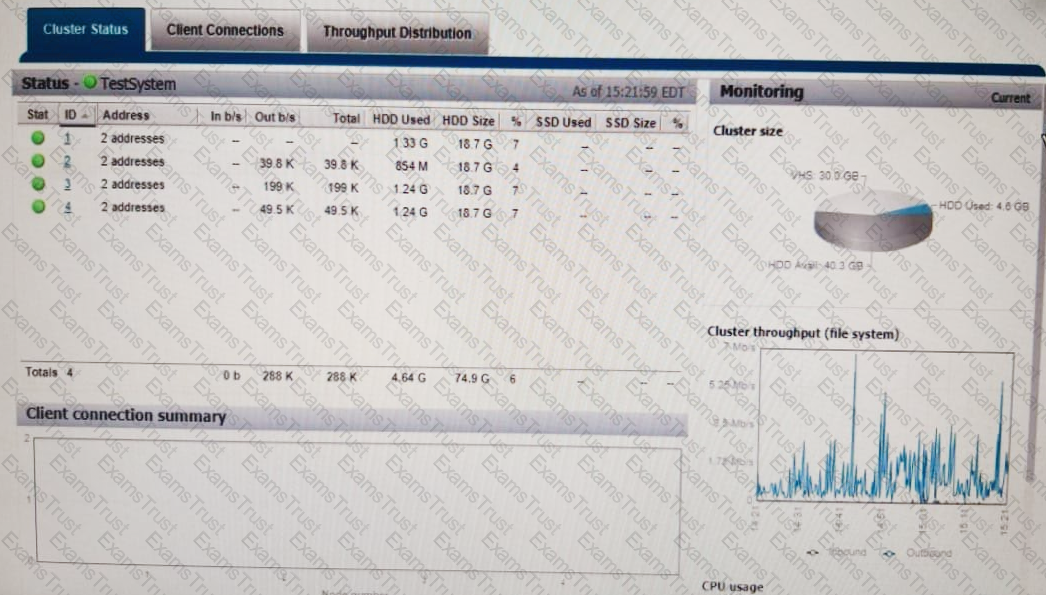
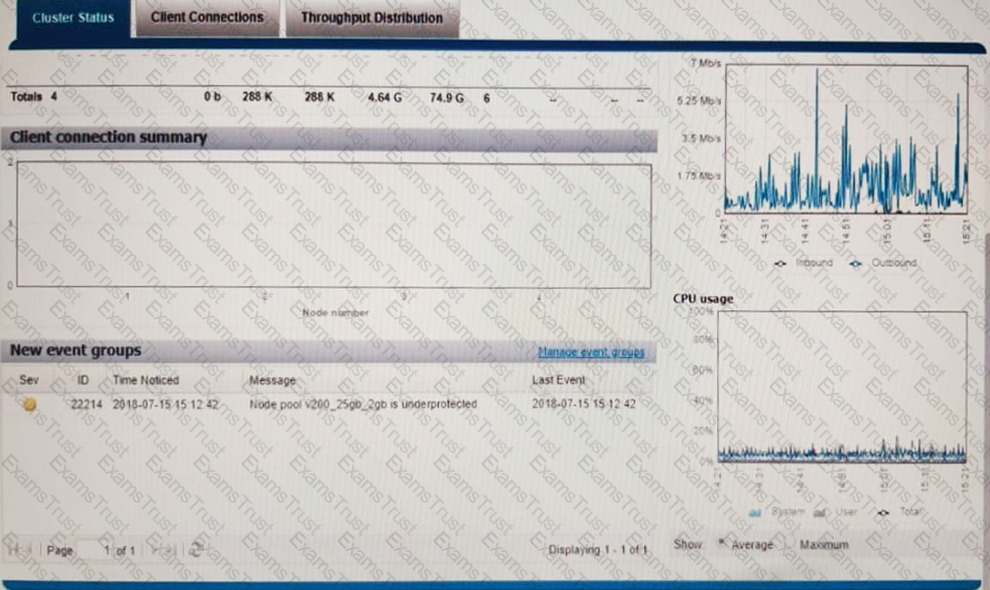
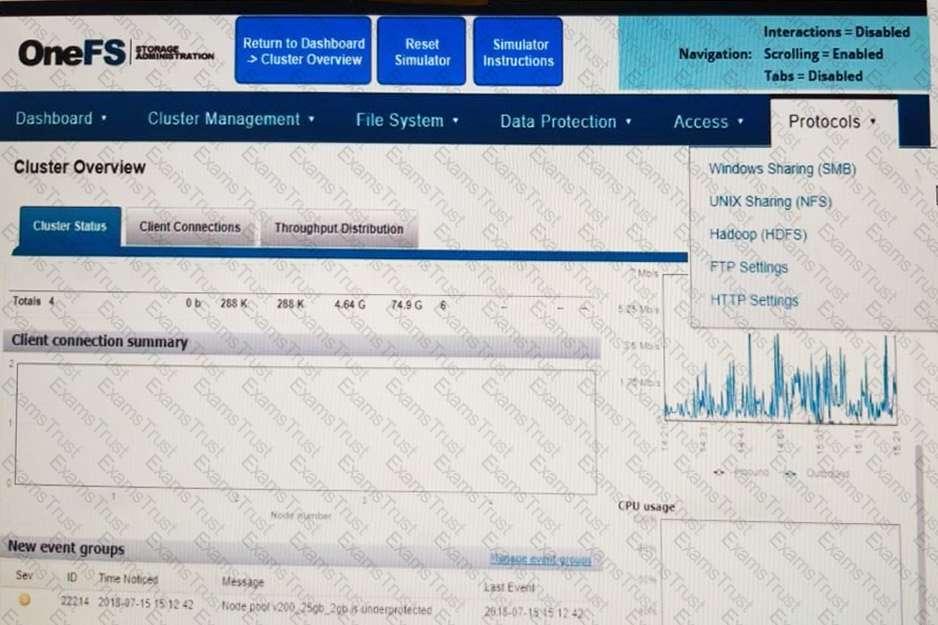
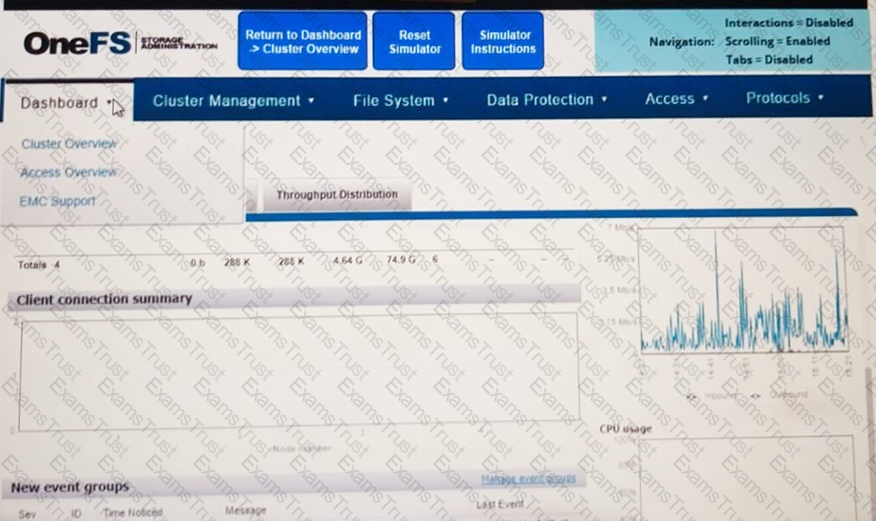
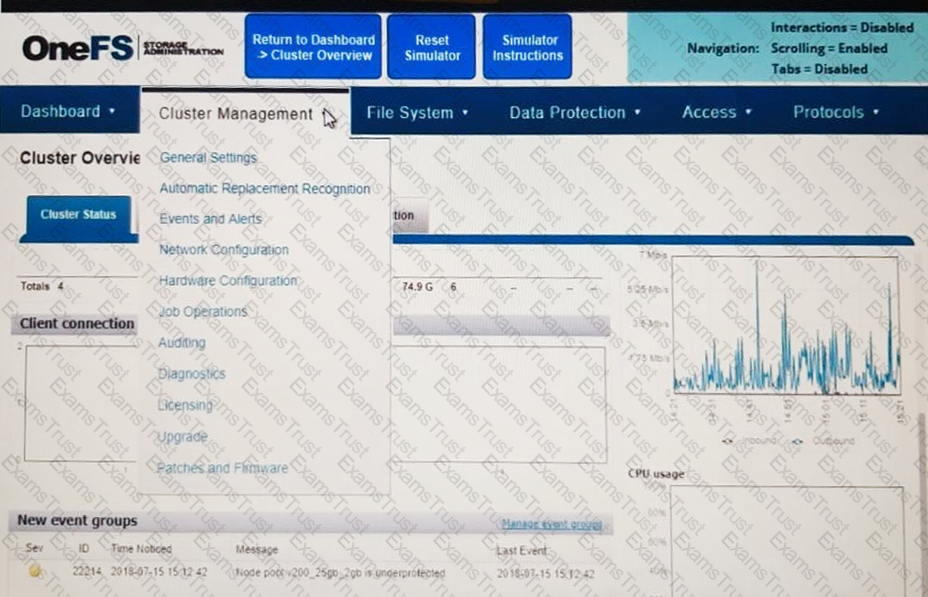
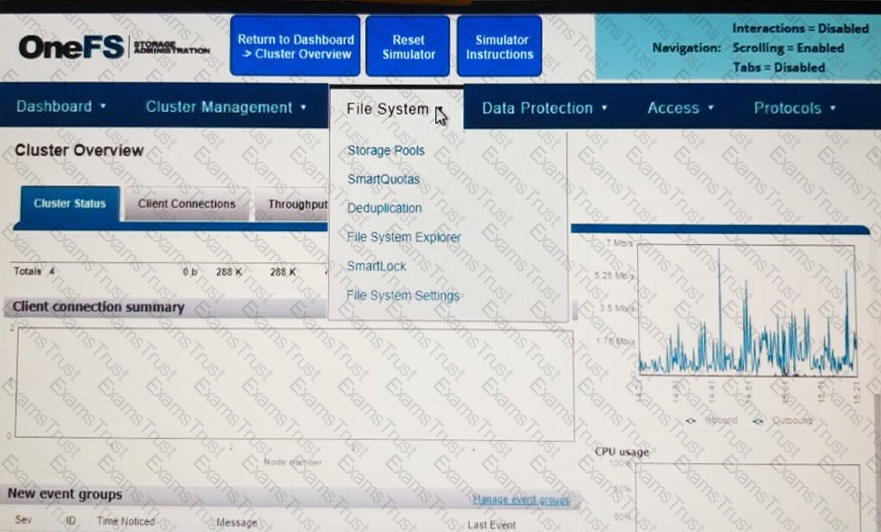
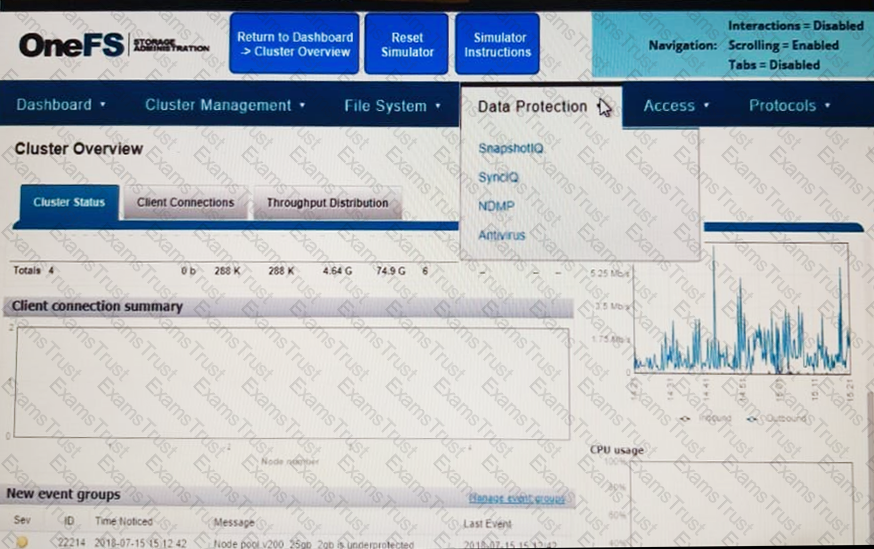
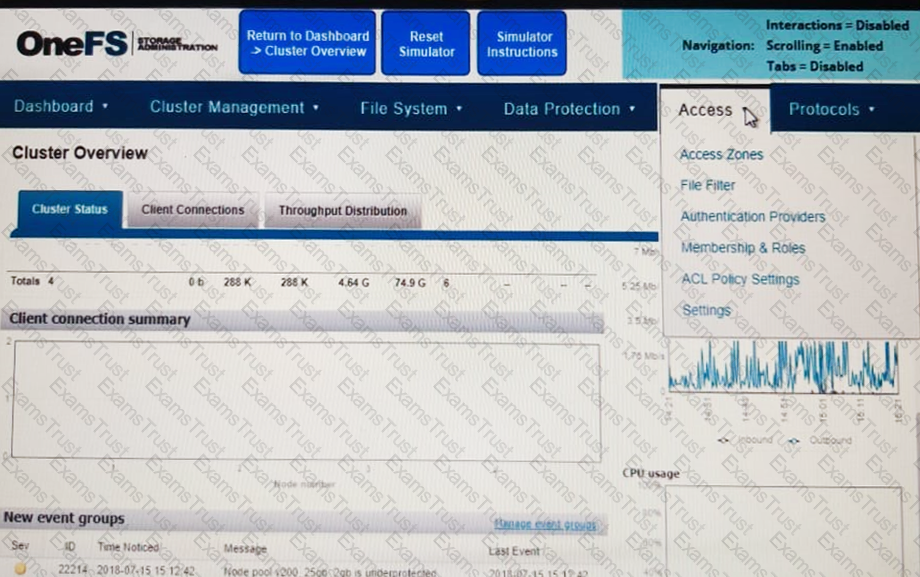
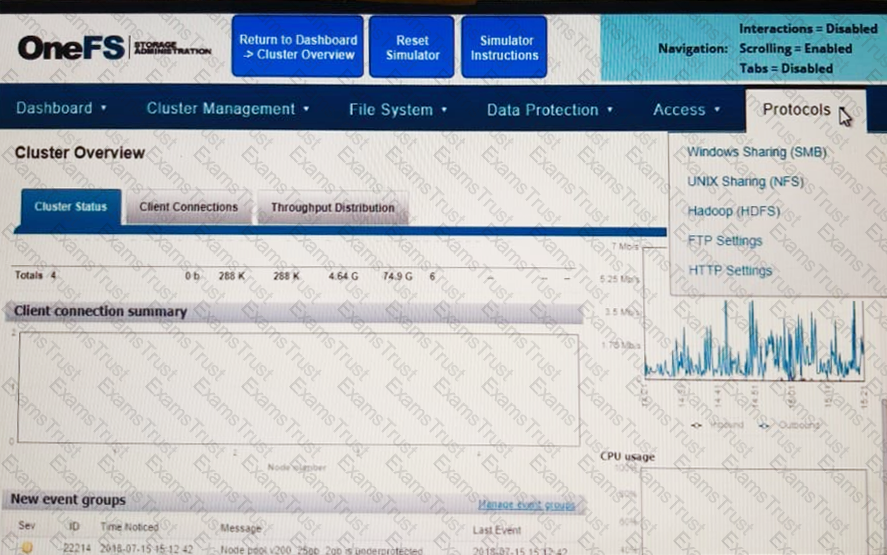
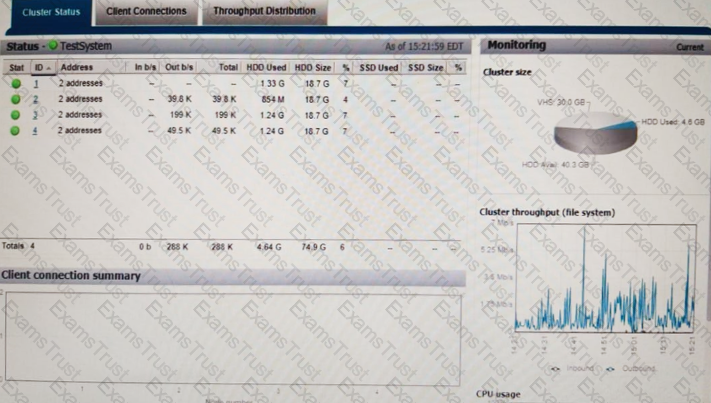
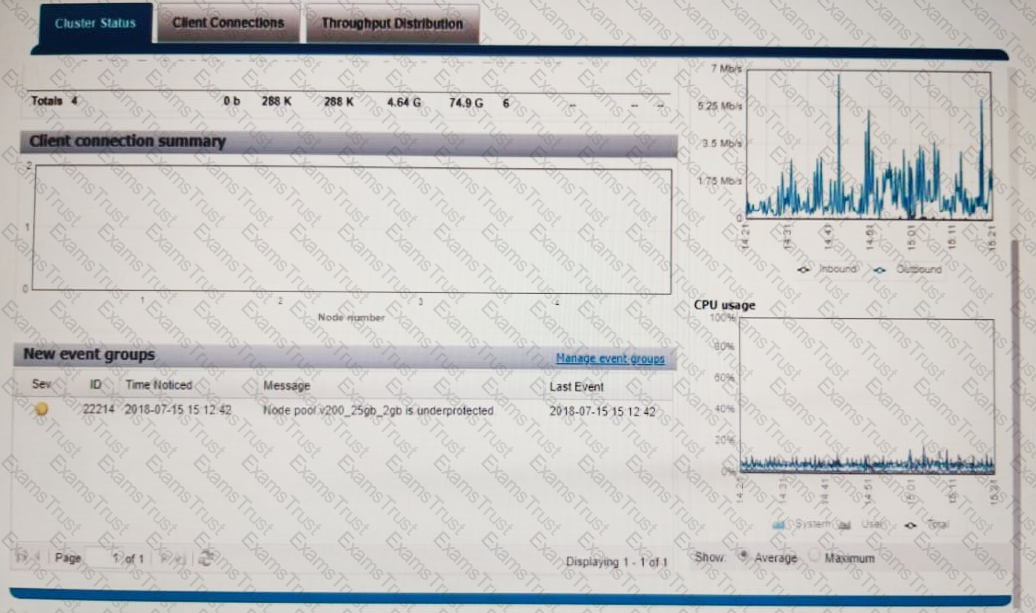
Based on your findings, which operation should be performed to address the delays?
A Microsoft Windows administrator has an environment that includes a 4-node Dell EMC Isilon H500 cluster with one subnet and two pools. The administrator will use SMBv3 in all their clients. One pool is for production using 10gige- 1 and 10gige-2 ports from each node. The other pool is for management using mgmt-1 from each node.
One of the concerns is the network throughput and how the administrator can get more than 10GbE throughput on the production pool on each node. Which recommendation should be provided?
A company uses the Dell EMC Isilon cluster’s A200 nodes for short-team archiving of digitized film. Historical and trending information shows that the cluster capacity will reach 90% full in 60 days. To avoid the need to purchase additional A200 nodes, the company requires a solution that archives data not accessed for 18 months to a more cost-effective platform. The long-term archive data must be online and accessible. Some performance loss is acceptable.
Which IT strategy provides a long-term solution that meets the requirements?